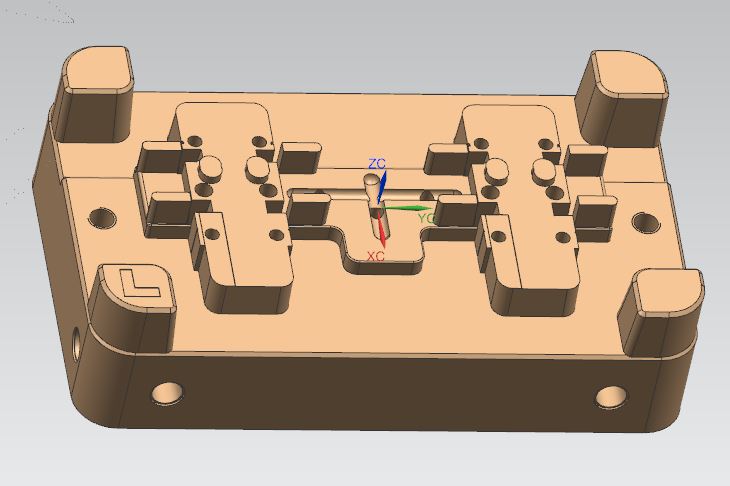Why Are Injection Molds So Expensive
Injection molding is one of the most popular manufacturing processes used for producing plastic parts in mass quantities. However, it is often seen as an expensive process, especially for small businesses and startups. In this article, we will explore the reasons why injection molds are so expensive and how to mitigate the cost.
-
Tooling Costs:
Injection molds are precision tools that require a high level of expertise and specialized equipment to create. The tooling process involves designing the plastic mold, machining it from high-quality materials such as steel or aluminum, and then finishing it to exacting standards. The process is both time-consuming and expensive, and the cost of the tooling is typically passed on to the customer.
-
Material Costs:
The material used in injection molding is also a significant factor in the cost of the process. High-quality resins that can withstand the heat and pressure of the molding process can be expensive. Additionally, the cost of the raw materials used in the plastic resin can fluctuate based on market conditions and availability.
-
Production Volume:
The cost per part produced decreases as the volume of parts produced increases. Therefore, injection molding is most cost-effective when producing large quantities of parts. However, for smaller production runs, the cost per part can be much higher, as the fixed costs of the tooling and materials are spread out over a smaller number of parts.
-
Complexity of Parts:
The complexity of the part being produced can also affect the cost of the injection molding process. Parts with intricate geometries and tight tolerances require more complex and expensive tooling, which can drive up the cost of the process. Additionally, complex parts may require additional processing steps, such as assembly or secondary operations, which can add to the overall cost.
-
Lead Times:
The lead time for producing injection molds can be lengthy, ranging from weeks to months depending on the complexity of the mold and the availability of materials. This can impact production schedules and increase the cost of the project, as delays in the tooling process can result in missed production deadlines or increased costs associated with rush orders.
-
Maintenance Costs:
Injection mold requires regular maintenance to ensure that they continue to produce quality parts. This can include cleaning, lubrication, and repair of the mold. Regular maintenance can help to extend the life of the mold and reduce the likelihood of production delays due to mold failures. However, the cost of maintenance should also be factored into the overall cost of the injection molding process.
Mitigating the Cost of Injection Molds:
While injection molds can be expensive, there are several strategies that can be employed to mitigate the cost of the process:
-
Design for Manufacturability:
Designing parts for manufacturability can help to reduce the cost of injection molding. Simple part geometries and designs that can be easily molded can reduce the complexity and cost of the tooling required. Additionally, designing parts with standard features and tolerances can reduce the need for customized tooling and reduce the cost of materials.
-
Use Standard Tooling:
Using standard tooling can help to reduce the cost of injection molding. Standard tooling is typically less expensive than custom tooling, as it is mass-produced and readily available. Additionally, standard tooling can be used for a variety of parts, reducing the need for custom tooling and lowering the overall cost of the injection molding process.
-
Use Low-Cost Resins:
Using lower-cost resins can also help to reduce the cost of injection molding. While high-quality resins can produce parts with superior properties, lower-cost resins can be a cost-effective alternative for parts that do not require high-performance properties. Additionally, using recycled resins can be an environmentally friendly and cost-effective option for certain applications.
-
Consider Alternative Processes:
While injection molding is a popular manufacturing process, there may be alternative processes that can be more cost-effective for certain parts or applications. For example, 3D printing or CNC machining may be a better option for producing low-volume or highly complex parts. While these processes may have their own limitations and cost considerations, they can be worth exploring as an alternative to injection molding.
-
Plan Ahead:
Planning ahead can also help to reduce the cost of injection molding. By forecasting production volumes and lead times, it is possible to schedule tooling and production runs more efficiently, reducing the need for rush orders or expedited shipping. Additionally, working closely with the injection molding supplier to optimize the tooling and production process can help to reduce costs over the long term.
Conclusion:
Injection molding can be an expensive process, but by understanding the factors that drive the cost and implementing strategies to mitigate them, it is possible to make the process more cost-effective. Designing parts for manufacturability, using standard tooling, and considering alternative processes are just a few of the ways to reduce the cost of injection molding. By working closely with the injection molding supplier and planning ahead, businesses can optimize the process and achieve high-quality, cost-effective production runs.
If you are looking for mould suppliers to make injection molds for your business, welcom to go to sincere tech to get price for your injection molds.


No comments yet